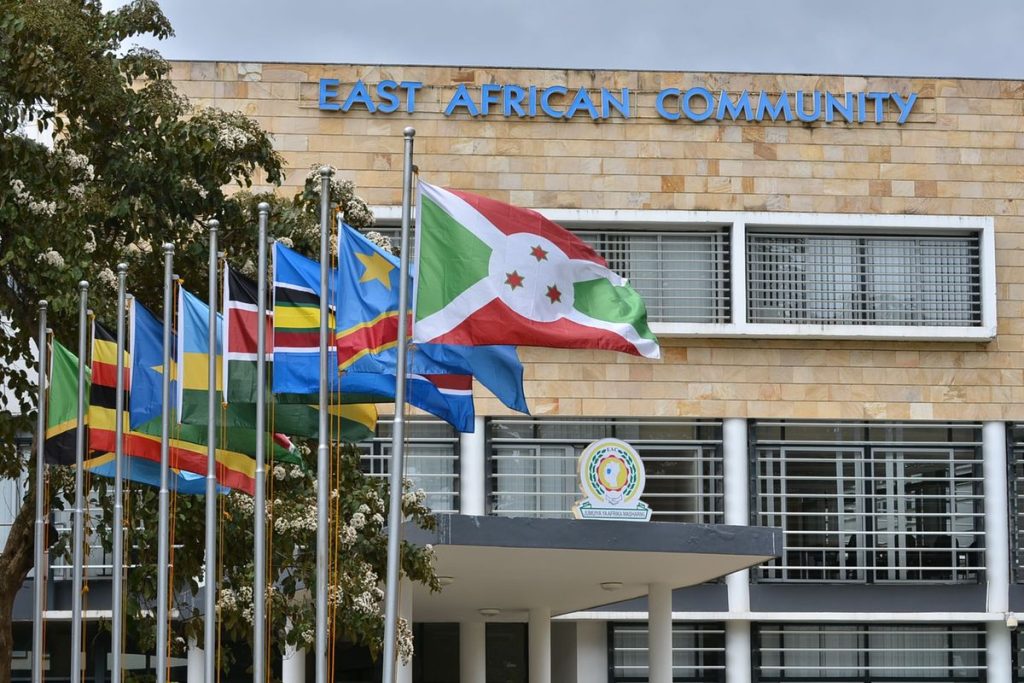In the East African Community (EAC), the concept of “Kupokezana Kijiti,” Swahili for “passing the baton,” embodies the principles of rotational leadership among member states.
This system symbolizes unity, shared responsibility, and equal representation in steering the region’s agenda. It ensures inclusivity and prevents dominance by any single member, fostering deeper regional integration.
On November 30, 2024, during the 24th Ordinary Summit of the EAC Heads of State held in Arusha, Tanzania, the tradition of rotational leadership was upheld as President Salva Kiir of South Sudan passed the mantle to President William Ruto of Kenya.
This ceremonial handover signifies the commitment to continuity in advancing the EAC’s mission to promote economic growth, regional stability, and cooperative governance.
Advancing Economic Integration: EAC’s Framework and Goals
The EAC has progressively worked toward economic and market integration through frameworks like the Customs Union, the Common Market Protocol, and the proposed Monetary Union. These initiatives aim to:
Enhance Intra-Regional Trade: Efforts to eliminate trade barriers have facilitated the freer movement of goods, services, capital, and people.
Boost Investments: Harmonized policies and standards create a more conducive environment for domestic and foreign investments.
Foster Economic Growth: The EAC seeks sustainable development by leveraging collective resources and expanding market access.
Despite notable achievements, challenges remain. Intra-EAC trade, for example, rose to $10.17 billion in 2022 but accounted for just 20% of total trade volumes.
RELATED: Benchmarking Tanzania’s Economic Progress Against EAC Peers
This reflects the need for further integration to unlock the full potential of the regional market.
Economic Diversity: A Double-Edged Sword
Diverse economies characterize the EAC, each contributing uniquely to the regional bloc:
Kenya: The region’s economic powerhouse, contributing 40% of the EAC’s GDP, excels in agriculture, services, and manufacturing.
Tanzania and Uganda: Rich in natural resources, these nations are key players in energy and mining.
Rwanda and Burundi: These smaller economies focus on agricultural exports and services.
South Sudan: Largely dependent on oil exports, it faces challenges in diversification.
This diversity brings opportunities and challenges, as member states often have conflicting economic priorities. For instance, Kenya’s push for rapid reforms contrasts with Tanzania’s cautious approach to integration. Aligning these priorities remains a significant hurdle.
The Role of Political Interests in Regional Cooperation
Political interests and inadequate political will have hindered progress in EAC integration. Key issues include:
1. Delayed Policy Implementation: National interests frequently precede regional commitments, slowing down critical agreements like the Common External Tariff.
2. Sovereignty Concerns: Reluctance to cede control over economic policies undermines deeper integration efforts.
3. Governance Challenges: Corruption and weak governance in some states erode trust, hindering collective action.
These political obstacles exacerbate economic inequalities among member states. For example, Kenya’s GDP per capita in 2023 stood at $2,100, starkly contrasting Burundi’s $284, highlighting the need for equitable growth strategies.
Leadership and EAC’s Development Vision
The efficacy of EAC leadership in balancing developmental goals and political interests is a subject of debate. While some milestones signal progress, others reveal limitations:
Successes: Initiatives like the Single Customs Territory have reduced costs and transit times for goods. Joint infrastructure projects like the Standard Gauge Railway have bolstered regional connectivity.
Challenges: Leaders’ focus on national interests over regional priorities and political disputes over resources and governance undermine the EAC’s cohesion and vision.
Charting the Path Forward
The EAC must address its challenges strategically to realize its vision of a unified, prosperous community. Key recommendations include:
Strengthening Institutions: Empowering EAC bodies to implement and enforce regional policies effectively.
Policy Harmonization: Aligning national and regional objectives to reduce disparities and promote inclusivity.
Political Accountability: Advocating for transparent governance and adherence to regional agreements.
Investing in Human Capital: Prioritizing education and skill development to empower citizens and address income inequalities.
By embracing these measures, the EAC can position itself as a model of regional integration, ensuring sustainable growth and equitable opportunities for all East Africans.

